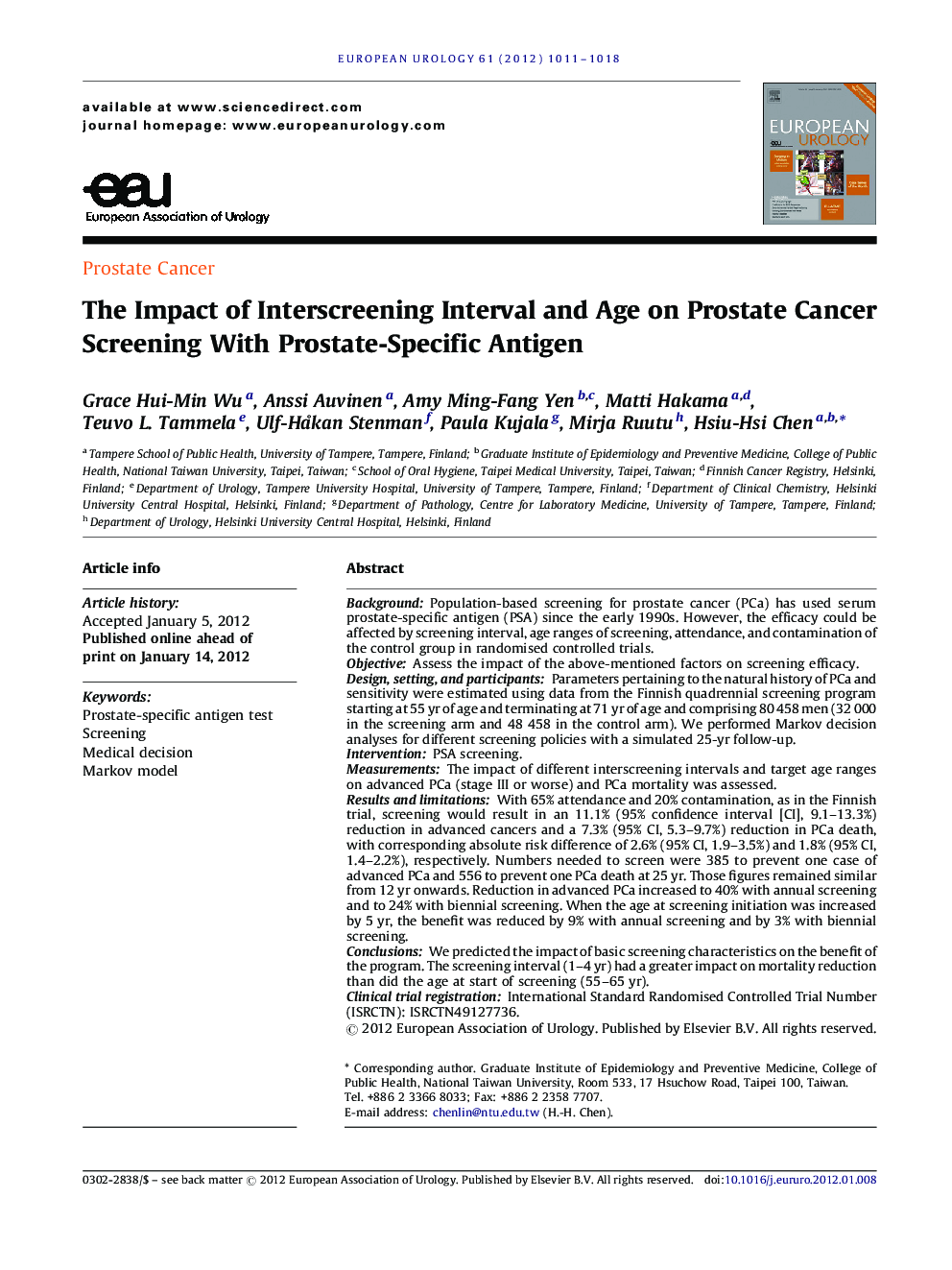| کد مقاله | کد نشریه | سال انتشار | مقاله انگلیسی | نسخه تمام متن |
|---|---|---|---|---|
| 3924219 | 1253097 | 2012 | 8 صفحه PDF | دانلود رایگان |

BackgroundPopulation-based screening for prostate cancer (PCa) has used serum prostate-specific antigen (PSA) since the early 1990s. However, the efficacy could be affected by screening interval, age ranges of screening, attendance, and contamination of the control group in randomised controlled trials.ObjectiveAssess the impact of the above-mentioned factors on screening efficacy.Design, setting, and participantsParameters pertaining to the natural history of PCa and sensitivity were estimated using data from the Finnish quadrennial screening program starting at 55 yr of age and terminating at 71 yr of age and comprising 80 458 men (32 000 in the screening arm and 48 458 in the control arm). We performed Markov decision analyses for different screening policies with a simulated 25-yr follow-up.InterventionPSA screening.MeasurementsThe impact of different interscreening intervals and target age ranges on advanced PCa (stage III or worse) and PCa mortality was assessed.Results and limitationsWith 65% attendance and 20% contamination, as in the Finnish trial, screening would result in an 11.1% (95% confidence interval [CI], 9.1–13.3%) reduction in advanced cancers and a 7.3% (95% CI, 5.3–9.7%) reduction in PCa death, with corresponding absolute risk difference of 2.6% (95% CI, 1.9–3.5%) and 1.8% (95% CI, 1.4–2.2%), respectively. Numbers needed to screen were 385 to prevent one case of advanced PCa and 556 to prevent one PCa death at 25 yr. Those figures remained similar from 12 yr onwards. Reduction in advanced PCa increased to 40% with annual screening and to 24% with biennial screening. When the age at screening initiation was increased by 5 yr, the benefit was reduced by 9% with annual screening and by 3% with biennial screening.ConclusionsWe predicted the impact of basic screening characteristics on the benefit of the program. The screening interval (1–4 yr) had a greater impact on mortality reduction than did the age at start of screening (55–65 yr).Clinical trial registrationInternational Standard Randomised Controlled Trial Number (ISRCTN): ISRCTN49127736.
Journal: European Urology - Volume 61, Issue 5, May 2012, Pages 1011–1018